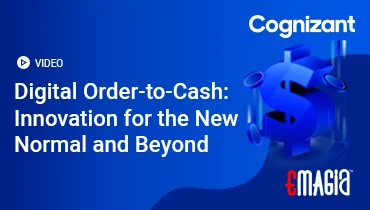In today’s competitive business landscape, managing and reducing B2B payment processing costs is crucial for maintaining profitability and operational efficiency. High transaction fees, manual processing inefficiencies, and compliance challenges can significantly impact a company’s bottom line. This comprehensive guide explores strategies to minimize these costs, enhance payment processes, and leverage technology for optimal financial management.
Understanding B2B Payment Processing Costs
What Are B2B Payment Processing Costs?
B2B payment processing costs encompass all fees and expenses associated with facilitating transactions between businesses. These costs can include:
- Interchange Fees: Charged by card networks for processing transactions.
- Assessment Fees: Levied by card networks for each transaction.
- Processor Markup Fees: Added by payment processors for their services.
- Monthly Service Fees: Regular charges for maintaining payment processing services.
- Chargeback Fees: Incurred when transactions are disputed by customers.
- PCI Compliance Fees: Costs associated with maintaining Payment Card Industry Data Security Standard compliance.
Factors Influencing Payment Processing Costs
Several factors can affect the total cost of B2B payment processing:
- Transaction Volume: Higher volumes may qualify for lower rates.
- Average Transaction Size: Larger transactions might attract different fee structures.
- Payment Methods Used: Different methods (e.g., credit cards, ACH transfers) have varying fees.
- Industry Type: Certain industries are considered higher risk, leading to higher fees.
- Processing Technology: Advanced systems may offer cost-saving features.
Strategies to Reduce B2B Payment Processing Costs
1. Negotiate with Payment Processors
Engaging in negotiations with payment processors can lead to more favorable terms:
- Leverage Transaction Volume: Use your business’s transaction volume as a bargaining chip for lower rates.
- Request Interchange-Plus Pricing: This transparent pricing model separates interchange fees from processor markups.
- Seek Fee Waivers: Inquire about waiving setup or monthly fees, especially if you’re a new customer.
- Regularly Review Agreements: Periodically assess your processing agreement to ensure competitive rates.
2. Implement Advanced Fraud Prevention Measures
Reducing fraud can lower associated costs:
- Utilize Authentication Tools: Implement Address Verification Service (AVS) and Card Verification Value (CVV) checks.
- Adopt Real-Time Monitoring: Use systems that detect suspicious activities promptly.
- Maintain PCI Compliance: Ensure adherence to security standards to avoid penalties.
3. Optimize Payment Methods
Choosing cost-effective payment methods can lead to savings:
- Encourage ACH Payments: Automated Clearing House transfers often have lower fees than credit cards.
- Offer Discounts for Preferred Methods: Incentivize customers to use payment methods that incur lower fees.
- Implement Surcharge Policies: Where legal, pass on processing fees to customers using high-cost payment methods.
4. Utilize Level 2 and Level 3 Data Processing
Providing additional transaction details can reduce interchange fees:
Level 2 Data: Includes information like tax amounts and customer codes.
- Level 3 Data: Offers detailed line-item data, beneficial for large B2B transactions.
5. Automate Payment Processes
Automation can enhance efficiency and reduce errors:
- Implement Electronic Invoicing: Speeds up the billing process and reduces manual errors.
- Use Automated Payment Systems: Streamlines payment approvals and reconciliations.
- Integrate with Accounting Software: Ensures seamless financial management.
6. Adopt Payment Orchestration Platforms
These platforms centralize payment processing:
- Consolidate Payment Gateways: Manage multiple payment methods through a single interface.
- Optimize Transaction Routing: Automatically select the most cost-effective processing path.
- Enhance Reporting and Analytics: Gain insights into payment performance and costs.
7. Regularly Audit Payment Processing Statements
Monitoring statements can identify unnecessary charges:
- Check for Hidden Fees: Ensure all charges are justified.
- Verify Transaction Rates: Confirm that negotiated rates are applied correctly.
- Assess Chargeback Trends: Identify and address causes of frequent disputes.
8. Ensure Accurate Merchant Category Code (MCC) Assignment
Your MCC affects processing fees:
- Confirm Correct MCC: An incorrect code can lead to higher fees.
- Request Reclassification if Necessary: If your business model has changed, update your MCC accordingly.
9. Batch Process Transactions
Consolidating transactions can reduce fees:
- Daily Settlement: Process all transactions in a single batch daily to minimize per-transaction fees.
- Avoid Delayed Settlements: Timely processing prevents higher fees associated with late settlements.
10. Educate Staff on Payment Processing Best Practices
Training can prevent costly errors:
- Proper Transaction Entry: Ensure staff know how to enter transactions to avoid downgrades.
- Recognize Fraud Indicators: Equip employees to identify and handle suspicious activities.
- Stay Updated on Compliance Requirements: Regular training on PCI DSS and other standards.
How Emagia Transforms B2B Payment Processing
Emagia offers a comprehensive suite of solutions designed to streamline and optimize B2B payment processes:
- AI-Powered Automation: Emagia’s intelligent systems automate invoicing, payment collections, and cash application, reducing manual efforts and errors.
- Advanced Analytics: Gain real-time insights into payment trends, helping identify cost-saving opportunities.
- Integrated Payment Platforms: Seamlessly connect with various payment gateways and methods, ensuring flexibility and efficiency.
- Enhanced Security Measures: Robust compliance with PCI DSS and other standards ensures secure transactions.
- Customizable Workflows: Tailor payment processes to fit specific business needs, improving overall efficiency.
By leveraging Emagia’s technology, businesses can significantly reduce payment processing costs while enhancing operational efficiency.
Frequently Asked Questions
How can I reduce B2B payment processing fees?
To reduce B2B payment processing fees, consider negotiating with processors for better rates, implementing automated payment systems, utilizing Level 2 and Level 3 data processing, and regularly auditing your payment statements for unnecessary charges.
What is Level 3 data processing, and how does it help?
Level 3 data processing involves providing detailed transaction information, such as item descriptions and quantities. This additional data reduces the risk of fraud, leading to lower interchange fees for B2B transactions.
Why is PCI compliance important in payment processing?
PCI compliance ensures that your business adheres to security standards for handling cardholder data. Non-compliance can lead to higher processing fees and increased risk of data breaches.
How does payment orchestration reduce costs?
Payment orchestration platforms centralize and optimize payment processing by intelligently routing transactions through the most cost-effective channels, reducing fees and improving transaction success rates.
Can automating payments really save money?
Yes, automating payments reduces manual errors, speeds up processing times, and lowers labor costs, all contributing to significant savings in payment processing.
Conclusion
Reducing B2B payment processing costs requires a multifaceted approach, combining negotiation, technology adoption, process optimization, and continuous monitoring. By implementing the strategies outlined above and leveraging solutions like Emagia, businesses can achieve significant cost savings, enhance efficiency, and maintain a competitive edge in their financial operations.



